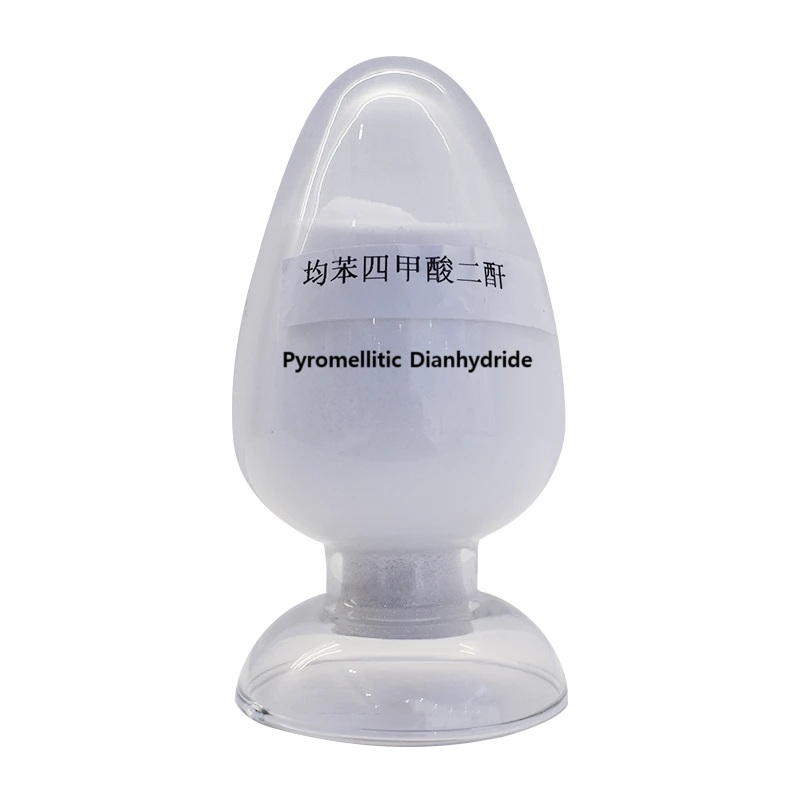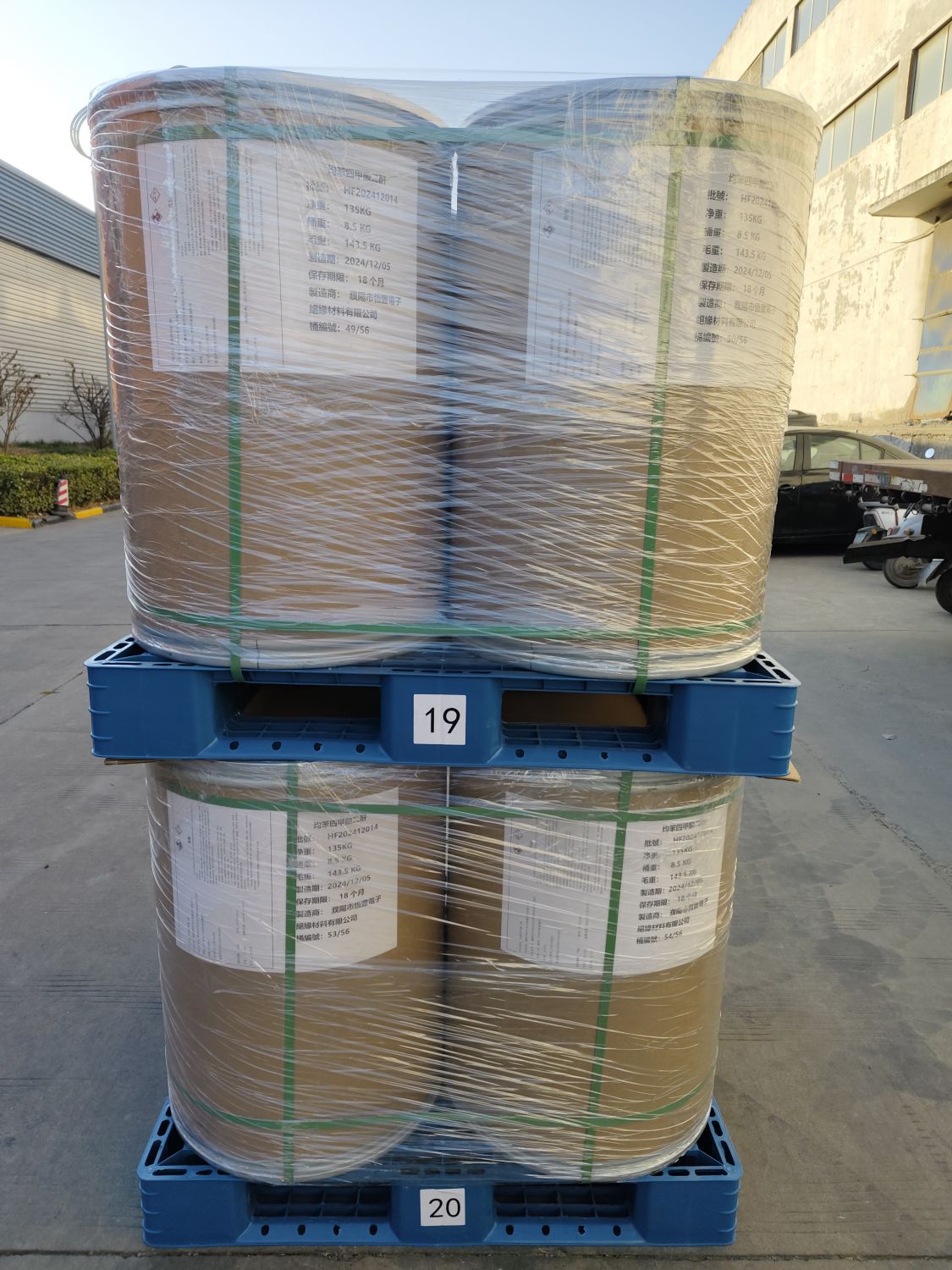Pyromellitic Dianhydride(PMDA)
Pyromellitic dianhydride
Pyromellitic Dianhydride: A Versatile and Essential Chemical
Pyromellitic dianhydride, often abbreviated as PMDA, is a crucial organic compound with the chemical formula C₁₀H₂O₆. In its pure form, it appears as white or slightly yellowish crystals. When exposed to humid air, PMDA readily absorbs moisture and hydrolyzes into pyromellitic acid. It is soluble in organic solvents such as dimethyl sulfoxide, dimethylformamide, and acetone, but insoluble in diethyl ether, chloroform, and benzene.
Diverse Applications
Polyimide Manufacturing: PMDA is primarily used as a key raw material for producing polyimides. Polyimide materials, derived from PMDA, are renowned for their exceptional heat resistance, high mechanical strength, and excellent electrical insulation properties. These characteristics make polyimides ideal for applications in aerospace, electronics, and high - performance automotive components. For example, in the aerospace industry, polyimide - based composites are used in aircraft engine parts due to their ability to withstand extreme temperatures
Send Email
Email : sales@bowcentralizers.com

